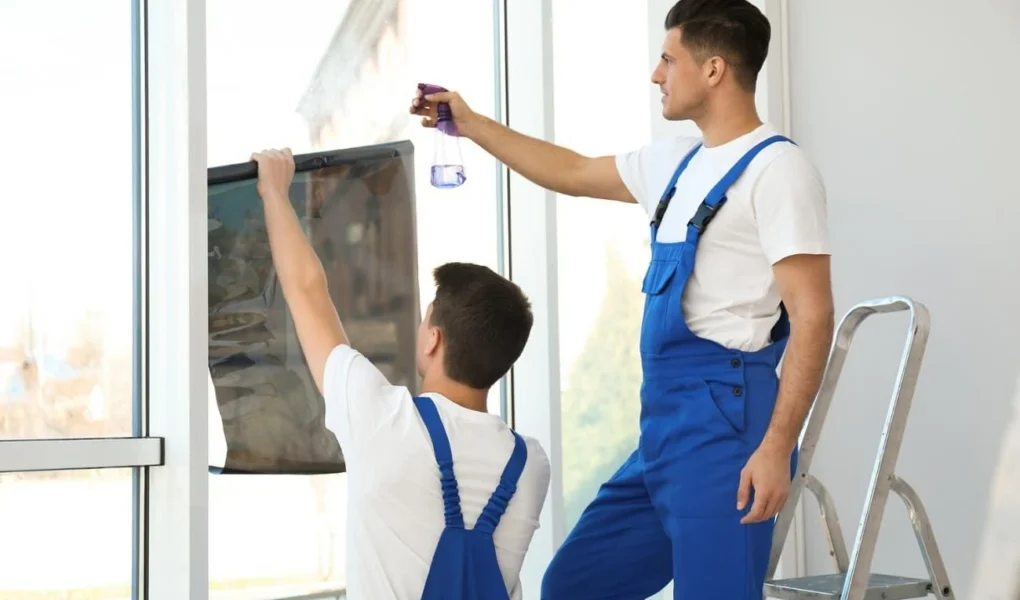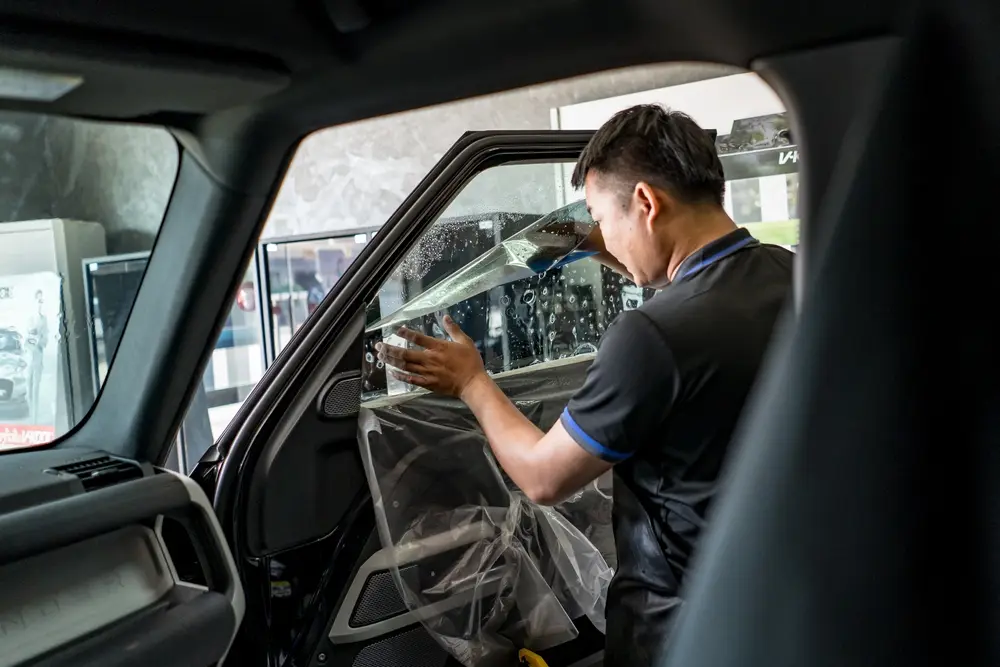Definition of Window Tint
An interior or exterior window tint is a thin, transparent film. It serves various purposes, such as reducing glare, blocking UV rays, and enhancing privacy. While commonly used in vehicles, window tint is famous for residential and commercial buildings. The film is typically made of polyester and infused with dyes or metals to achieve desired properties.
Among the benefits of window tint is its ability to regulate temperature. This can lead to lower energy costs by reducing the need for excessive air conditioning in hot climates. Window tint helps protect interior furnishings from sun damage and prolongs their lifespan.
Installing window tints on your vehicle or home windows can offer various benefits, such as UV protection, privacy, and heat reduction. But why is it essential for the window tint to dry properly?
When window tint is not allowed to dry completely, it can lead to a range of issues like bubbling, peeling, or an uneven appearance. Proper drying ensures the tint adheres securely to the glass surface without imperfections.
Allowing the window tint to dry thoroughly helps maintain its longevity and effectiveness. A well-dried tint will be more durable and resistant to wear and tear from everyday use.
Factors Affecting Drying Time
Regarding the drying time of window tint, several factors can influence how long it takes for the film to fully dry and cure. Drying times can be affected by the type of tint used – dyed, ceramic, and metallic tints all have their own properties. Another factor to consider is the climate and temperature where the tinting is applied. Hotter temperatures typically lead to faster drying times compared to colder environments.
The size and shape of the windows also affect how quickly the tint dries. More oversized windows may take longer for the moisture trapped beneath the film to evaporate completely. Proper installation techniques are crucial in ensuring that air bubbles are minimized during application, which can impact how efficiently the tint dries.
Average Drying Time for Different Types of Window Tint

Various factors come into play regarding the average drying time for different types of window tint. The type and quality of the tint and environmental conditions can all impact how long it takes to fully dry.
Generally, dyed window tints dry quicker than metallic or ceramic ones. Dyed tints typically take 2-3 days to fully cure, while metallic or ceramic tints may require up to a week.
Factors such as humidity levels and temperature can also influence drying times. The tint may dry faster in hot and sunny climates than in more relaxed or humid environments.
It’s essential to follow manufacturer guidelines regarding drying times for specific types of window tint to ensure optimal results. Rushing the process can lead to bubbling or peeling down the line.
Stay patient during drying and allow ample time for your window tint to be correctly set for long-lasting performance and aesthetics.
Tips for Accelerating the Drying Process
Are you eager to speed up the drying process of your window tint? Here are some valuable tips to help you achieve faster results.
Parking your car in direct sunlight can significantly accelerate the drying time. The sun’s heat will expedite the tint film’s curing process on your windows.
Another practical tip is to use a hairdryer in a low-heat setting. Gently blow warm air over the freshly installed window tint to promote quicker evaporation of moisture trapped between the film and glass.
Rolling down your windows slightly can enhance airflow inside your vehicle, aiding in faster evaporation and drying of the tint. This simple trick can make a noticeable difference in how quickly your tint sets.
Avoid washing or cleaning your windows for at least a week after applying a new tint. Moisture from cleaning solutions can interfere with the drying process and potentially cause bubbling or peeling of the film.
Common Mistakes to Avoid During the Drying Process
When it comes to window tinting, ensuring a smooth and successful drying process is crucial. Many people must correct common mistakes that can hinder the outcome of the tint job.
One mistake to avoid is rolling down your windows too soon after installation. This can cause the tint to shift or peel off prematurely. Another standard error is using harsh cleaning agents or abrasive materials on newly-tinted windows, which can damage the film.
Exposing freshly tinted windows to direct sunlight before thoroughly drying can result in bubbling or discoloration. Allowing adequate drying time in a cool, shaded area is essential.
Neglecting proper care and maintaining your window tint can lead to premature fading or peeling. Be sure to follow manufacturer recommendations for cleaning and upkeep to prolong the life of your tint job.
Conclusion: Importance of Properly Dried Window Tint and Final Thoughts
Properly dried window tint is crucial for ensuring its longevity and effectiveness. Allowing the tint to dry completely prevents issues such as bubbling, peeling, or discoloration. Taking the time to follow the recommended drying process can save you from potential headaches.
Investing in quality window tint and allowing it to dry correctly will enhance your vehicle’s or property’s aesthetics and provide added privacy and protection against UV rays. Be patient during drying and avoid common mistakes that could compromise the results. With a bit of care and attention, you can enjoy all the benefits that well-installed window tint offers for years.





